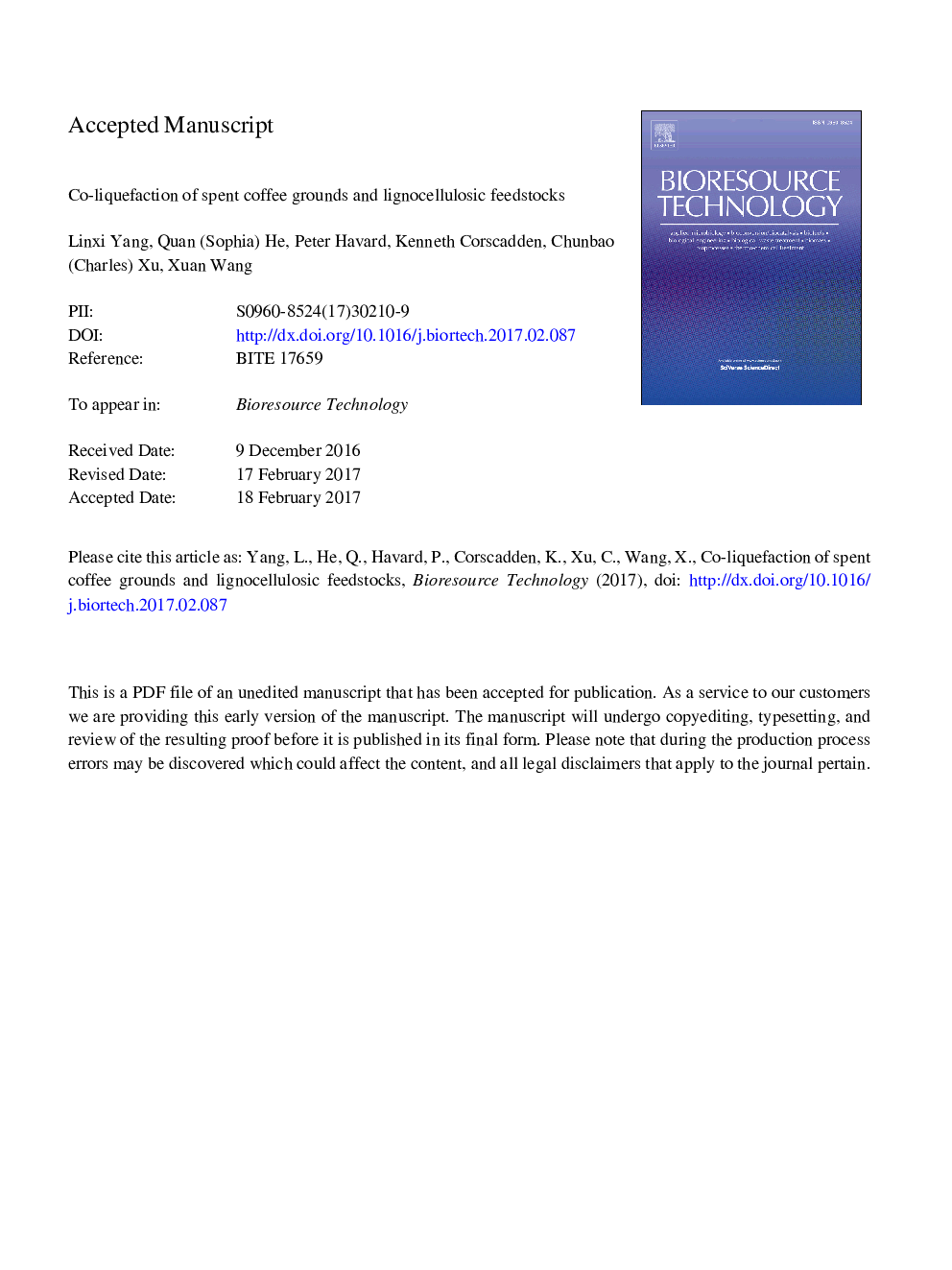| Article ID | Journal | Published Year | Pages | File Type |
|---|---|---|---|---|
| 4997441 | Bioresource Technology | 2017 | 37 Pages |
Abstract
Co-liquefaction of spent coffee grounds (SCG) with paper filter (PF), corn stalk (CS) and white pine bark (WPB) respectively, was examined in subcritical water for bio-crude oil production. The optimum reaction temperature was 250 °C, and the mixing biomass ratio was 1:1. SCG and CS was identified to be the best feedstock combination with a significant positive synergetic effect in the co-liquefaction process with 5% NaOH as a catalyst. The yield of bio-crude oil was increased by 20.9% compared to the mass averaged yield from two feedstocks, and the oil quality was also improved in terms of viscosity and relative molecular mass. A negative effect presented in the co-liquefaction of SCG/WPB. The resulting bio-crude oils were characterized by elemental analyzer, GC-MS, GPC and viscometer, indicating that mixing feedstock in the co-liquefaction process also influenced the higher heating value (HHV), viscosity, molecular mass and chemical composition of bio-crude oil.
Related Topics
Physical Sciences and Engineering
Chemical Engineering
Process Chemistry and Technology
Authors
Linxi Yang, Quan (Sophia) He, Peter Havard, Kenneth Corscadden, Chunbao (Charles) Xu, Xuan Wang,
